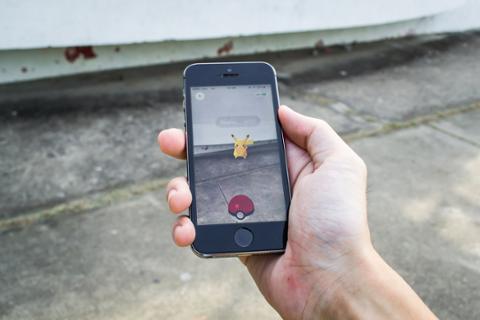Imagine walking down a city street and using a tablet to determine what landmarks are in your immediate vicinity and reading about their history. This may be a reality soon. Apple's is in the process of implementing new augmented reality technologies in the iPad, as
reported by Apple Insider. Augmented reality takes a live view of the physical world and enhances it with computer generated sensory input like annotations, sound or graphics presented through layer on top of what you're looking at. Apple plans to enable iPads to use a split screen display that identifies elements of a video feed, according to a
patent filing. Apple gives an example of users viewing a live video of San Francisco's skyline in one display area, while in the other they see balloon call outs identifying buildings or structures. The iPad's software would utilize onboard positioning systems like GPS, WiFi and Cell ID, along with motion sensors to transmit information about the live feed to a network service. The network would then spit back 3D models of recognized objects. The user could navigate all this in real-time.
For example, gyroscopes, magnetometers and other motion sensors can provide angular displacements, angular rates and magnetic readings with respect to a reference coordinate frame, and that data can be used by a real-time onboard rendering engine to generate 3D imagery of downtown San Francisco. If the user physically moves device, resulting in a change of the video camera view, the information layer and computer-generated imagery can be updated accordingly using the sensor data.
A second filing reveals a more ambitious plan. iPads could have a display screen with a transparent portion that enables users to view objects behind the screen, overlaid with relevant graphics.
The "transparent portion may encompass the entire viewing area, or only a portion of the viewing area of the display," wrote Apple engineer Aleksandar Pance, the inventor credited to the patent application titled "Transparent Electronic Device." He wrote the upcoming iPads could have two or more display screens, (with each having transparent portions) arranged in an overlaid manner. Or, two display screens with one display screen partially opaque, displaying a transparent window that's movable via multitouch input from the user. "For example, the overlays may be transmitted onto a display screen that overlays a museum exhibit, such as a painting,” Pance wrote. “The overlay may include information relating to the painting that may be useful or interesting to viewers of the exhibit. Additionally, overlays may be utilized on displays in front of, for example, landmarks, historic sites, or other scenic locations. For example, a tour bus may include one or more displays as windows for users. These displays may present overlays that impart information about locations viewable from the bus.”



